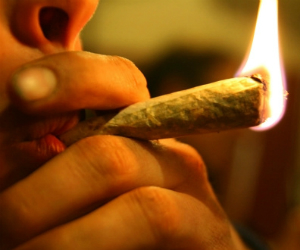Smoking Up Behind the Wheel Linked to Risky Driving While Sober
 Driving under the influence of drugs or alcohol has been tied in previous studies to other dangerous driving behaviors, like speeding and dangerous overtaking, but research investigating the relationship between cannabis and risk of car accidents has produced contradictory results.
Driving under the influence of drugs or alcohol has been tied in previous studies to other dangerous driving behaviors, like speeding and dangerous overtaking, but research investigating the relationship between cannabis and risk of car accidents has produced contradictory results.
Psychological scientists Isabelle Richer and Jacques Bergeron of the University of Montreal looked at whether those who drive while under the influence of cannabis are more likely to engage in risky and aggressive driving behaviors in general.
An all-male group of 75 participants was given a questionnaire asking about their driving habits, cannabis use, and history of car accidents. Participants then went through a series of tests in a driving simulator.
In one of the driving simulation tasks, participants were told that they had to make it to a meeting on time. They then drove behind an “intelligent vehicle” that was programmed to slow down while participants were behind it, and to accelerate when participants were trying to pass.
Participants who reported that they had driven a car while stoned at least once in the past year were more likely to hit higher speeds in the driving simulator tasks. These drivers also reported higher rates of risky driving behavior generally, including driving under the influence of alcohol and speeding.
The researchers also looked at whether certain personality traits were associated with the likelihood of driving under the influence. Participants with high scores on measures for impulsivity and sensation seeking — a desire for engagement in varied, novel sensations and experiences — were more likely to drive under the influence of cannabis.
“By defining high-risk personality profiles, it is possible to identify individuals who are more likely to drive under the influence of cannabis,” the researchers write in the journal Accident Analysis and Prevention, “and in turn, tailor intervention programs to be more effective among those individuals.”
Because driving under the influence was associated with specific personality traits, intervention programs might benefit from targeting their messaging towards high sensation seekers.
While driving under the influence was associated with several dangerous driving behaviors, it was only marginally correlated with an increased risk of collisions in self-reports. In fact, the factor most strongly correlated with reports of real life accidents was driving exposure, or the amount of time spent on the road.
The researchers cautioned that because the real life traffic accidents were measured through self-report, rather than official traffic records, there could be inaccuracies in the data due to misreporting or memory errors.
Reference
Richer, I., Bergeron J. (2009). Driving under the influence of cannabis: Links with dangerous driving, psychological predictors, and accident involvement. Accident Analysis and Prevention, 41(2), 299-307. DOI: 10.1016/j.aap.2008.12.004





APS regularly opens certain online articles for discussion on our website. Effective February 2021, you must be a logged-in APS member to post comments. By posting a comment, you agree to our Community Guidelines and the display of your profile information, including your name and affiliation. Any opinions, findings, conclusions, or recommendations present in article comments are those of the writers and do not necessarily reflect the views of APS or the article’s author. For more information, please see our Community Guidelines.
Please login with your APS account to comment.